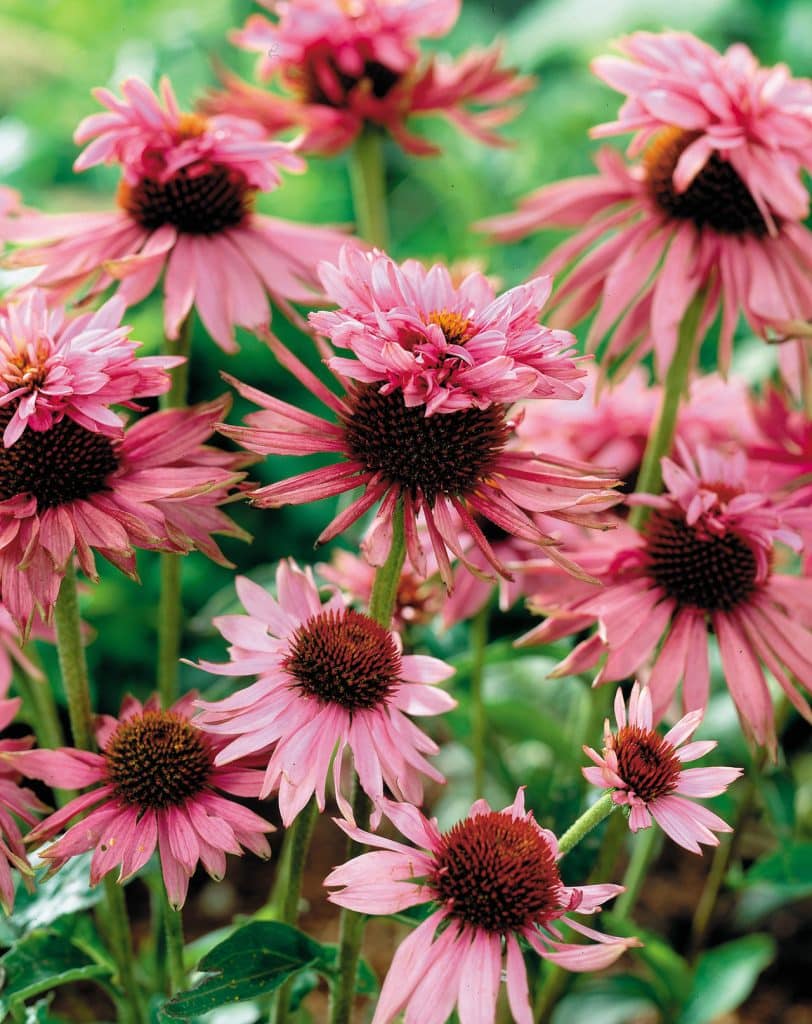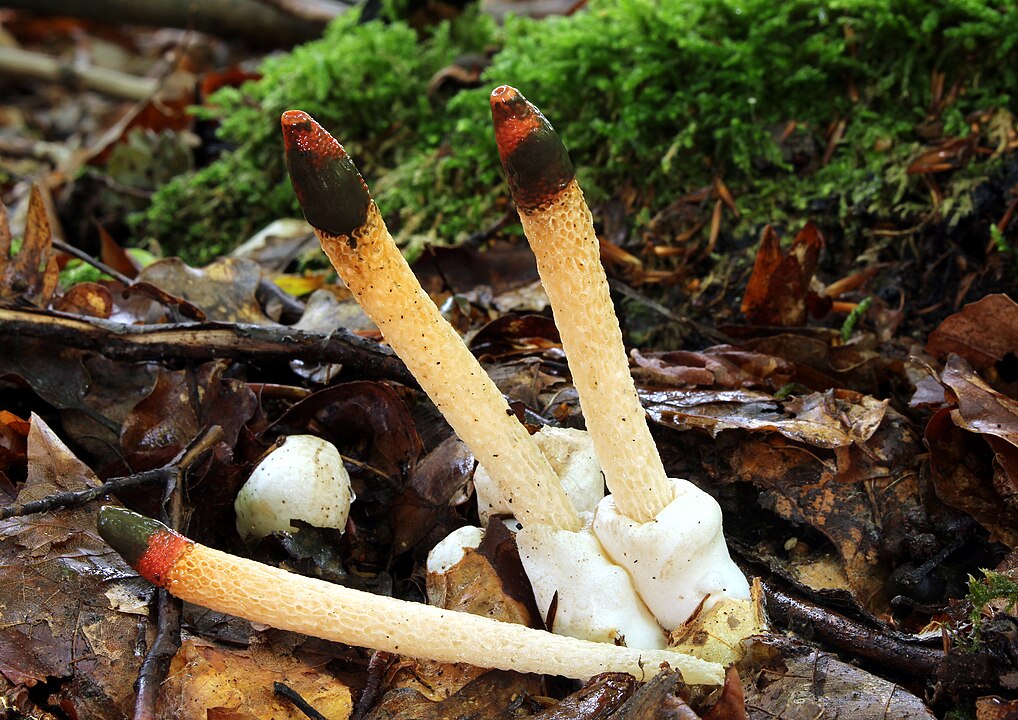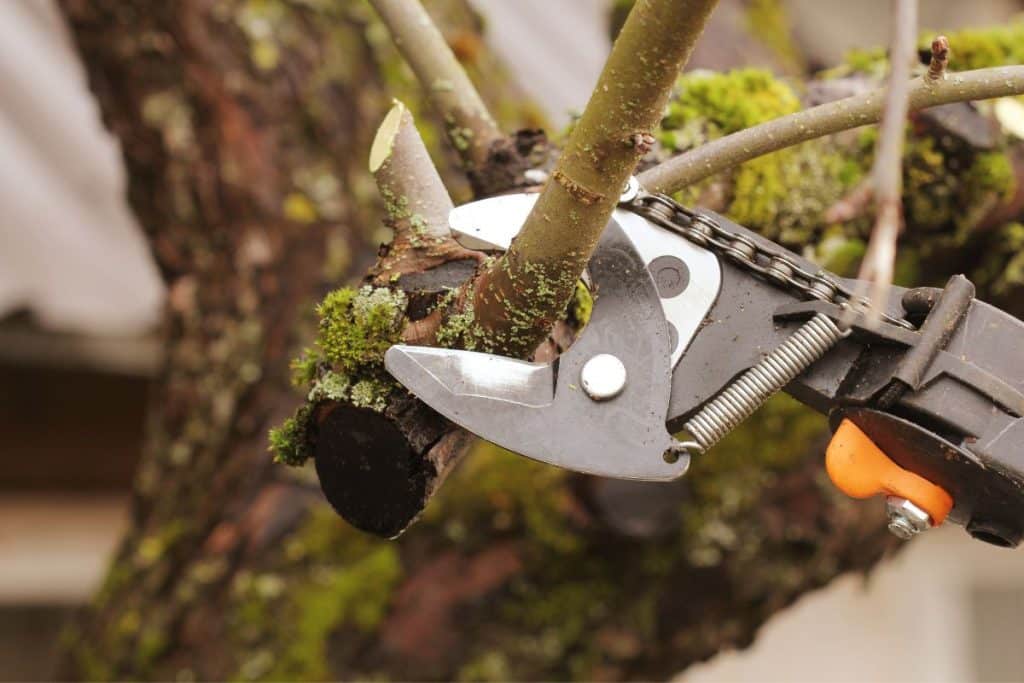Flowers With Intriguing Tops
Question
I spotted some double coneflowers that look like someone grafted them on top. These plants are on the front of my workplace, and I went over to see if they were real flowers. Is this a new variety of black-eyed Susan, or is it just a freak of nature? It’s the first time I’ve ever seen anything like it.

Answer
This is a rather special cultivar of echinacea called Echinacea purpurea ‘Doppelganger’ (usually sold under the name ‘Doubledecker’, but its real name is ‘Doppelganer’). The cultivar ‘Indiaca’ is very similar, but its flowering is less uniform. The flowers of this plant appear normal (with pink rays at the base and a raised yellow disc in the center) at the beginning of the season, but as flowering progresses, additional rays begin to appear at the top of the disc. Thus, the flower ends the season with two tiers of blooms.
A Mushroom With an Evocative Shape and Name
Question
I found a strange white and red mushroom in my flower beds. I would appreciate it if you could tell me its name, whether it is common, and also whether it is poisonous.

Answer
This curious-looking mushroom is called the dog stinkhorn (Mutinus caninus). It is not particularly rare and usually appears in summer or fall. It lives on wood debris or dead leaves, which it helps to decompose, and is not considered harmful. It is not toxic, but it is not considered edible either.
Prune or Trim
Question
Is there a difference between pruning and trimming? Over the past 10 years, I have had my trees trimmed twice and hired an arborist who advised me to do so every four years. I know that Mother Nature does a good job in the forests, but in the city, is it a necessity for safety or insurance reasons?

Answer
Pruning and trimming are almost synonymous and refer to the removal of branches, usually on trees. Yes, in cities, it may be necessary to remove a branch that is at risk of falling, but only very rarely. The vast majority of trees can complete their entire life cycle, from germination to death, without ever being pruned. Unfortunately, when a tree is pruned incorrectly, particularly when all its branches are cut to the same length, a technique often referred to as “topping,” this causes the growth of a profusion of secondary branches, which are naturally weak and likely to fall in the short term.
Usually, you can see with your own eyes when a tree is unhealthy: there are dying branches, a section that is turning yellow, a trunk that is cracking or leaning, a tree that is generally withering, etc. In these cases, you should call an arborist. If your trees appear to be in good condition, there is no need to prune them unless they are harming other trees or structures.
I suggest that you don’t let anyone touch your trees unless they can prove that they are certified by the International Society of Arboriculture. There are too many people with no real knowledge of tree pruning who improvise as pruners or trimmers simply because they know how to use a chainsaw!
Geraniums in Winter
Question
Last fall, I brought my geraniums indoors and placed them in a sunny spot, watering them regularly. This worked well, but given how many I have this year, I don’t have enough space to do the same. A friend told me that you can keep them in a cool, dark place without watering them. Is that true? I could just throw them out and buy new ones next spring, but the results are more spectacular with older plants.

Answer
It is perfectly possible to put a geranium (a Pelargonium, in fact, because true geraniums, of the Geranium genus, are outdoor plants) into dormancy during the winter. You can leave them in their pots or remove most of the soil and store them bare-rooted in a paper bag. The most important thing is to keep them in a dark, cool place, preferably between 5 and 10°C. In both cases, as there is no light, the leaves will turn yellow and fall off: simply compost them. In the spring, take the plants out, repotting them if necessary, and cut off any dead or dried stems. Expose the plant to light again and start watering it once more. In a short time, the healthy stems will produce new leaves and soon flowers as well.
Larry Hodgson has published thousands of articles and 65 books during his career, in both French and English. His son, Mathieu, has made it his mission to make his father’s writings accessible to the public. This text was originally published in Le Soleil on September 24, 2011.
My mother always overwintered her Perlargoniums in our unheated garage in central PA. It got quite cold but not below freezing when they were wrapped in paper bags and against the house side. I think we did not have so many plant nursery’s then (50 years ago) so buying each spring wasn’t as easy as it is now. Her plants were spectacular each year. Oddly I never really appreciated the work she put into her gardening and now I am an Extension Service Master Gardener I know she knew more about plants then I ever will.
I read about all the wonderful things one can do with a place between 5-10 C in the winter, but where does one find such a space? My whole gardening life I have never had any winter options except heated and unheated spaces.
I had my poinsettia out all summer. It is doing so well with lots of green leaves. How can I make it bloom for the winter.
I brought it indoors yesterday until next spring.
The only time I managed that, it was in my work office so there was no artificial light in the evenings.